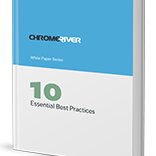 Predictive analytics, or the sifting through of company data in order to highlight important patterns to make predictions and better decisions, is currently a hot topic in the business world. Advocates believe this approach holds great potential especially with a recent report from Nucleus Research suggesting that predictive analytics helped Mueller Inc. obtain a 248 percent ROI on new packaging equipment after investing in and using IBM's SPSS Modeler technology.
Predictive analytics, or the sifting through of company data in order to highlight important patterns to make predictions and better decisions, is currently a hot topic in the business world. Advocates believe this approach holds great potential especially with a recent report from Nucleus Research suggesting that predictive analytics helped Mueller Inc. obtain a 248 percent ROI on new packaging equipment after investing in and using IBM's SPSS Modeler technology.
Skeptics have called Nucleus Research's findings into question, but Mueller's manager of strategy analytics is confident that the IT advisory firm's calculations were accurate. Ultimately, leaders at Mueller Inc. are satisfied with the results of the SPSS Modeler investment. But is the ROI of predictive analytics really as high as reports indicate? The answer to this important question depends greatly on the method used to calculate ROI, as well as the impact of external factors not typically included the ROI calculation.
The Subjective Nature of ROI in Predictive Analytics
Each situation incorporating predictive analytics is different, and as a result, the ultimate ROI of predictive analytics will vary greatly from one application to the next. In general, determining the ROI of predictive analytics requires a full quantifying of labor and technology costs as well as the results of a particular business endeavor. These results are then compared with those of a control group to determine whether the end results justified the cost of predictive analytics.
A business considering predictive analytics as a practical solution should keep in mind the process is rarely straightforward. Although the basic approach to calculating ROI can be useful, it may not take into account such factors as changes in customer service quality or anomalies regarding sales. Conversely, even with the potential impact of these factors, the standard ROI approach can be useful for obtaining an overarching look at the impact of predictive analysis.
Standard ROI Results and Variations in Predictive Analysis Returns
The ROI of a predictive analytics effort may differ greatly from one situation to the next, but figures still tend to follow a basic pattern. A study from the International Data Corporation (IDC) suggested that Nucleus Research's ROI calculations were largely in line with other analytics projects, which average a return on investment of 250 percent. Compare this to the average 89 percent return on investment for non-predictive analytics efforts and it is clear why this approach is quickly gaining traction in the business world.
Proponents of predictive analytics argue that, while a great deal of gray area continues to surround this business solution, the basic quantitative nature of the approach lends itself well to today's competitive market. ROI calculations help ensure that predictive analytics is continually utilized in the most efficient and effective manner possible. Through the regular calculation of return on investment through predictive analytics, business leaders can feel confident that the feedback garnered from predictive analytics efforts will nudge their businesses in the right direction, ensuring long-term profitability and growth.
Subscribe
Latest Posts
Posts by Category
I just love the Chrome River application. I could probably sell it! Finance Administrative Coordinator Law Firm, 800 Employees
Can’t we just move year-end, so that we can roll out Chrome River sooner!? Financial Systems Director Law Firm, 300 Employees


Comments